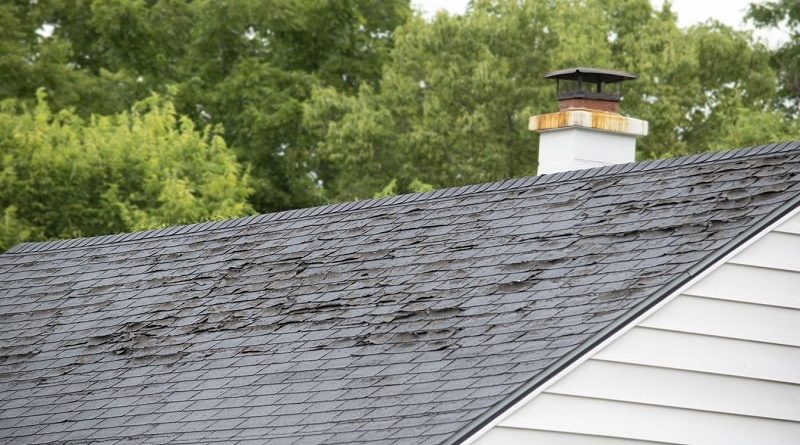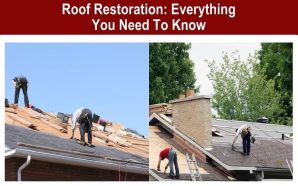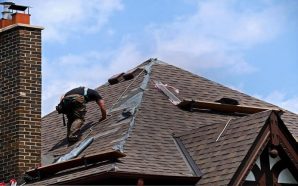While you’re getting that new roof installed or shopping for a new roof, you’re planning for the future. How long will you be in this house? How long does a new roof last? How much will it cost to maintain later?
These are important factors to understand when you are buying a new home and when you’re thinking about updating your current home—or maybe even when you’re selling a home and need to answer potential buyers’ questions. A roof replacement is such a major expense, and you need to get accurate estimates.
Do Roofs Last as Long as Your Contractor Says?
When you get an estimate of your roof’s lifespan, you may be skeptical. Will it really last? It depends on several factors:
- Type and Quality of Roofing Material: Certain materials naturally last longer than others.
- Quality of Craftsmanship: The skill of your installers can affect how long your roofing materials keep the rain out.
- Maintenance: Periodic inspections and necessary repairs make a roof last and can stop small shingle tears from becoming major leaks.
- Climate and Weather: Temperature fluctuations, high winds, and falling objects or hail can damage roofing materials and shorten a roof’s lifespan.
If you have a roof right now that’s in the middle of its lifecycle, you could get it inspected and look over its maintenance record to estimate how much life it has left.
5 Types of Roofing Material
What is your new roof made of? Some materials naturally last longer than others. If your roof is made of one of the following, you’ll have a good chance of accurately predicting how long your new roof will last.
Asphalt Shingles
Basic asphalt shingles last 10 to 20 years, depending on weather and maintenance (they typically break faster in extreme weather). However, architectural shingles can last 15 to 25 years, and premium shingles can last 20 to 35 years.
Metal
Metal roofing comes in several types. The standing seam design is the most common and can last 30 to 50 years. High-quality metals like stainless steel, zinc, copper, or titanium can last 50 to 100 years. Metal shingles can also last 30 to 50 years if they’re installed well. Ribbed metal panels, though, can last 20 to 35 years or 30 to 40 years if they have concealed fasteners.
Wooden Shakes or Shingles
Wood-covered roofs can last around 25 to 40 years. You can get the most years out of yours by cleaning your roof every year and repainting or staining it every five years. Cedar is particularly popular in some areas because it has a higher resistance against insects and rot.
Clay Tiles
A quality installation of clay tiles can last 50 to 100 years. They resist fire, rot, and wind. You should still have your tiles cleaned annually because moss, mold, and algae can grow on them, sending roots into your roof structure. Also, clay tiles are not recommended for extremely cold weather, which can crack them—unless specially sealed. Finally, they are heavier than asphalt shingles, so your roof will need a sturdier frame.
Slate
Natural slate is a type of stone. It is resistant to fire, very durable, and heavy. It can last from 20 to 100 years, depending on the quality grade:
- S1: 75+ years
- S2: 40 to 75 years
- S3: 20 to 40 years
Some historical buildings are covered in S1 natural slate.
When Should You Replace a Roof?
Keep in mind that a long-lasting roof has great economic value, as well as the value of protecting your home. If you need to sell your house, a high-quality new roof can increase the sale price by $12,000 or more. If you replace it, you may be able to earn back the price of installation through a higher home sale price.
If you have recently moved into a home—or are planning to buy a home—the roof is new to you, but it may be in the middle or end of its life. How long will this new roof last? You could look for a few clues to estimate its remaining life:
- Its History: Try to get maintenance records and installation records from the previous owner. If none exist, you could talk to several neighbors and ask if they remember what year the roofing was installed.
- Installation Quality: You can inspect the roof yourself. If it is covered in asphalt shingles, see if shingles are consistently straight or crooked. Are there any exposed nails? Poor workmanship may lower the overall lifespan of the roofing.
- Visible Signs Inside the Home: Search for any streaks on ceilings or light coming through the ceiling in upper rooms or attics, which can tell you if shingles are missing and if the roof structure is damaged.
You can find a total of eleven signs to look for in a guide, Do I Need a New Roof? It will help you decide if you need new roofing materials and/or features installed.
Remember that your roofing materials and climate will determine the range of the possible lifespan of your roof, but the quality of the installation and maintenance will change your results. Choose a well-reviewed, trusted contractor to install this valuable and vital part of your home.









